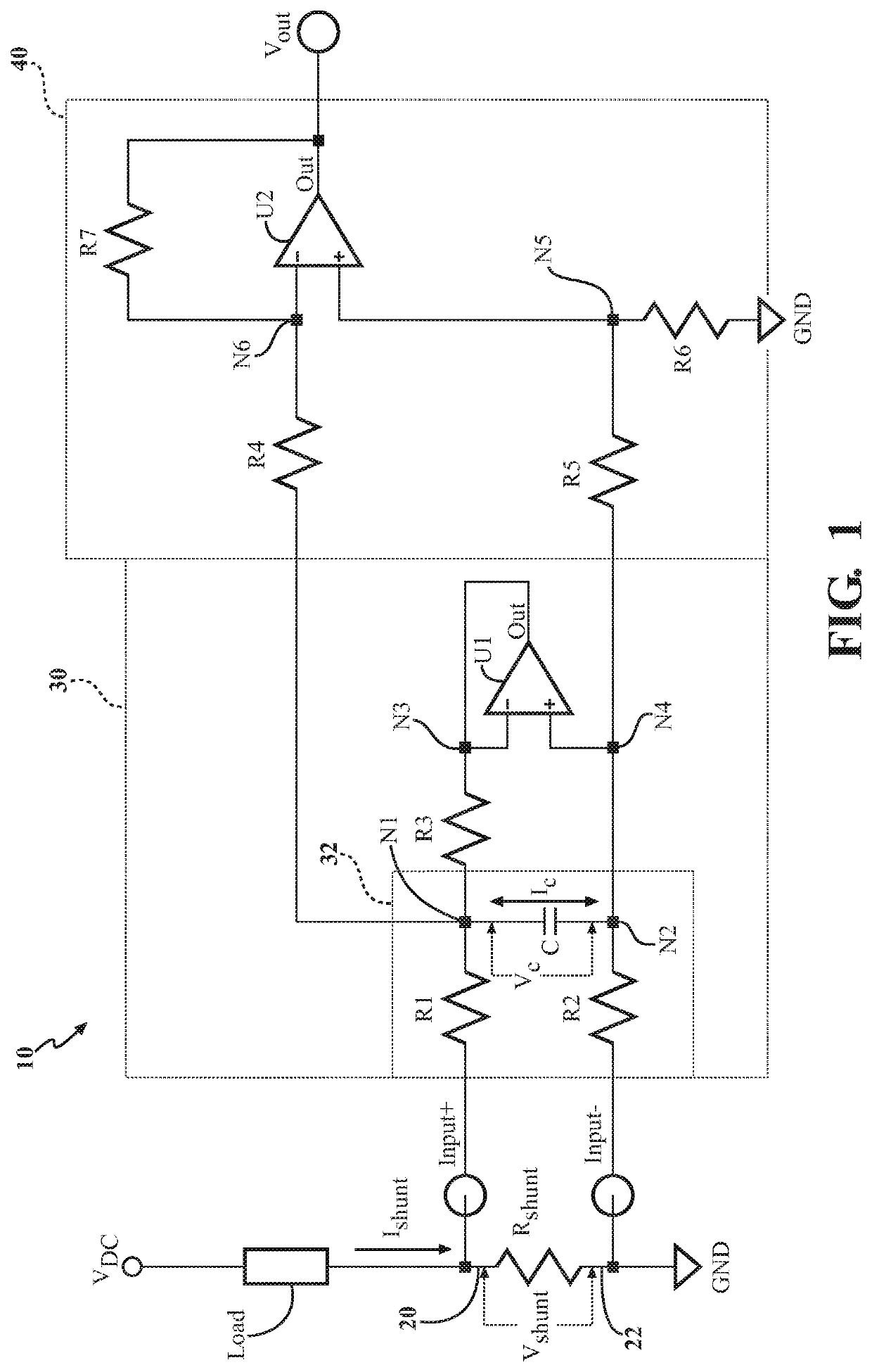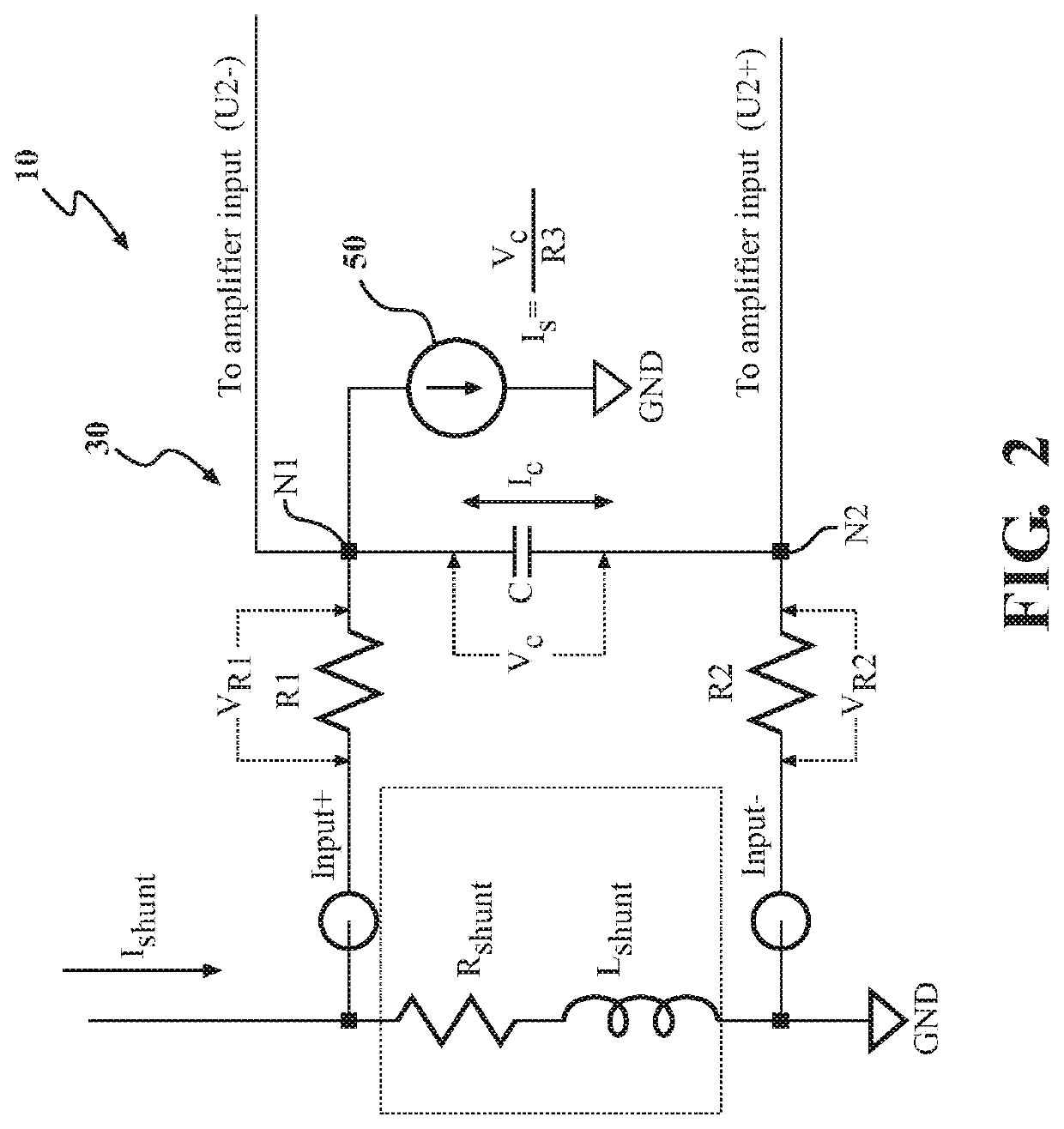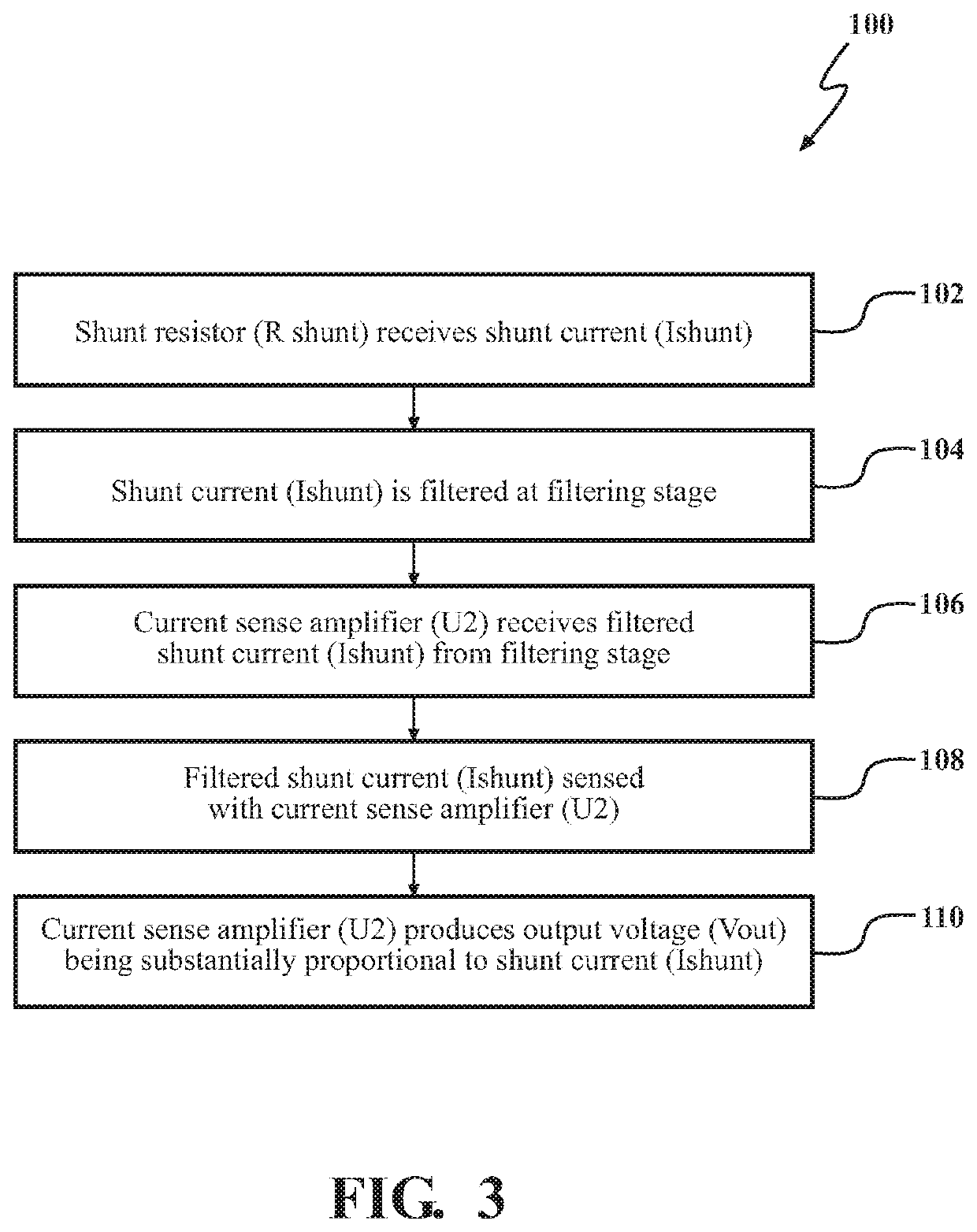Circuit and method for shunt current sensing
a current sensing and circuit technology, applied in the direction of current measurements only, measurement devices, instruments, etc., can solve the problems of reducing battery life, sensing works properly, damage to batteries, etc., to increase versatility, increase precision and robustness, and high precision
- Summary
- Abstract
- Description
- Claims
- Application Information
AI Technical Summary
Benefits of technology
Problems solved by technology
Method used
Image
Examples
Embodiment Construction
[0024]Referring to the Figures, wherein like numerals indicate like or corresponding parts throughout the several views, a circuit 10 and a method 100, 200 of operating the same are provided.
[0025]The circuit 10 is utilized for shunt current sensing. As such, the circuit 10 may also be referred to as a shunt current sensing circuit. Generally, shunt current sensing involves measuring current through a shunt resistor (Rshunt), as shown in FIG. 1. The shunt resistor (Rshunt) receives a shunt current (Ishunt) that flows through the shunt resistor (Rshunt).
[0026]The shunt resistor (Rshunt) is disposed in series with a load (L). This allows current flowing through the load (L) to also flow through the shunt resistor (Rshunt). As such, the shunt resistor (Rshunt) effectively senses the load (L) current. In this sense, the shunt resistor (Rshunt) is effectively a current-sense resistor. The shunt current (Ishunt) is analogous to the load current. The shunt current (Ishunt) may have any amp...
PUM
 Login to View More
Login to View More Abstract
Description
Claims
Application Information
 Login to View More
Login to View More - R&D
- Intellectual Property
- Life Sciences
- Materials
- Tech Scout
- Unparalleled Data Quality
- Higher Quality Content
- 60% Fewer Hallucinations
Browse by: Latest US Patents, China's latest patents, Technical Efficacy Thesaurus, Application Domain, Technology Topic, Popular Technical Reports.
© 2025 PatSnap. All rights reserved.Legal|Privacy policy|Modern Slavery Act Transparency Statement|Sitemap|About US| Contact US: help@patsnap.com



